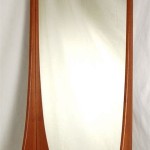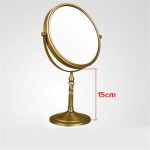Can I Drive My Car With a Broken Wing Mirror?
The legality of driving a vehicle with a broken wing mirror, also known as a side mirror, is a common concern for drivers. The answer is rarely straightforward and depends on several factors, including the jurisdiction, the type of mirror affected, and the extent of the damage. The purpose of this article is to elucidate the legal requirements and practical considerations surrounding driving with a damaged or missing wing mirror, allowing drivers to make informed decisions about the safety and legality of operating their vehicle.
Wing mirrors are essential components of a vehicle's safety system. They provide drivers with a view of the surrounding environment, reducing blind spots and enabling safer lane changes, turns, and parking maneuvers. Without functioning wing mirrors, the driver's awareness of other vehicles, pedestrians, and cyclists is significantly compromised, increasing the risk of accidents. Laws and regulations regarding wing mirrors aim to mitigate these risks by ensuring that vehicles meet minimum visibility standards.
The specific regulations governing wing mirrors vary by jurisdiction. In many countries, laws mandate that vehicles have at least two functional mirrors providing a clear view of the road behind. Typically, one of these mirrors must be an interior rearview mirror, while the other must be an exterior side mirror, usually on the driver's side. Some jurisdictions require both driver-side and passenger-side exterior mirrors. The failure to comply with these requirements can result in fines, points on a driving record, or even vehicle impoundment.
Legal Requirements for Wing Mirrors
The legal framework surrounding wing mirrors is designed to ensure adequate visibility for drivers. Understanding these requirements is crucial to avoid legal penalties and maintain road safety. These requirements often specify the number of mirrors required, their size, and their field of view.
Many jurisdictions stipulate that a vehicle must have at least two mirrors that allow the driver to see clearly to the rear. Often, this includes an interior rearview mirror as well as at least one exterior side mirror, typically the one on the driver's side. Some regions, driven by safety considerations, demand that both driver-side and passenger-side mirrors are present and in good working order. The absence of a mandatory mirror constitutes a violation of traffic laws and can result in a citation.
The condition of the wing mirrors is also subject to legal scrutiny. A mirror that is cracked, damaged, or obscured in a way that prevents a clear view of the road is considered non-compliant. Even if a vehicle has the required number of mirrors, they must be properly adjusted and free from obstructions. A mirror that is loose or vibrates excessively, making it difficult to obtain a clear image, may also be deemed illegal.
The severity of penalties for driving with a broken wing mirror varies. Minor offenses might result in a warning or a small fine, while more serious or repeat offenses could lead to larger fines, points on a driving record, or even a requirement to appear in court. In some cases, a vehicle may be deemed unroadworthy and prohibited from being driven until the mirror is repaired or replaced.
Assessing the Damage and Determining Legality
When a wing mirror is damaged, it is essential to assess the extent of the damage and determine whether it renders the vehicle non-compliant with local laws. Several factors come into play when making this determination.
The type of mirror affected is a significant factor. If the driver-side mirror is damaged or missing, it is more likely to be considered a violation than if the passenger-side mirror is affected, especially in jurisdictions that require only one exterior mirror. The interior rearview mirror is often considered a primary safety device, and its absence or damage can also lead to legal repercussions.
The extent of the damage is also crucial. A small crack that does not significantly impair visibility might be tolerated, while a large crack, shattered mirror, or missing mirror is more likely to be considered a violation. The location of the damage also matters. A crack in the corner of the mirror might not be as problematic as a crack that obscures the center of the mirror's surface.
Drivers should also consider the availability of alternative views. If the vehicle is equipped with other features that compensate for the damaged mirror, such as blind-spot monitoring systems or a wide-angle interior mirror, it might be possible to argue that the vehicle still meets minimum visibility standards. However, this is unlikely to supersede the legal requirement to have functioning wing mirrors.
To determine whether a vehicle complies with local laws, drivers should consult the relevant motor vehicle regulations. These regulations often specify the requirements for wing mirrors, including the number of mirrors required, their condition, and their field of view. If there is any doubt, it is advisable to consult with a law enforcement agency or a qualified vehicle inspector.
Practical Considerations and Safe Driving Practices
Even if driving with a broken wing mirror is technically legal in a given situation, it is essential to consider the practical implications and adopt safe driving practices to mitigate the risks associated with reduced visibility.
Increased vigilance is paramount. Drivers should be extra attentive to their surroundings and compensate for the reduced visibility by using their other mirrors more frequently and thoroughly. Shoulder checks, where the driver briefly turns their head to check their blind spot, become even more critical. These checks should be performed before changing lanes, turning, or merging with traffic.
Adjusting the remaining mirrors to maximize their field of view can help compensate for the missing or damaged mirror. Some vehicles have mirrors that can be adjusted to provide a wider angle of view or reduce blind spots. Experimenting with different mirror positions can help optimize visibility.
Maintaining a safe following distance is also crucial. This provides more time to react to unexpected events and reduces the risk of collisions. Drivers should also be aware of other vehicles' blind spots and avoid lingering in those areas.
It is also advisable to avoid driving in adverse weather conditions, such as rain or fog, when visibility is already compromised. Driving at night can also be more challenging with a broken wing mirror due to reduced visibility and glare from other vehicles' headlights.
Repairing or replacing the damaged wing mirror as soon as possible is the best course of action. This ensures that the vehicle meets legal requirements and restores full visibility, enhancing safety for the driver and other road users. Delaying repairs can increase the risk of accidents and potentially lead to further damage to the vehicle.
When having the mirror repaired or replaced, it is essential to choose a reputable repair shop and ensure that the replacement mirror meets quality standards. A poorly fitted or low-quality mirror can be less effective and may not meet legal requirements. It is also important to ensure that the mirror is properly adjusted after installation.
In summary, while it might be permissible to operate a vehicle with a damaged wing mirror under certain circumstances, prioritizing safety and adhering to local regulations is paramount. Assess the damage, understand legal obligations, and implement defensive driving techniques. Prompt repair or replacement will ensure optimal visibility and contribute to safer roadways for everyone.

Broken Smashed Missing Wing Mirrors Are They Legal

Damaged Or Missing Wing Mirrors Are They Legal Kwik Fit

Broken Smashed Missing Wing Mirrors Are They Legal

Damaged Or Missing Wing Mirrors Are They Legal Kwik Fit

Is It Illegal To Drive A Car With Broken Or Damaged Mirrors

Know The Law Driving With A Broken Mirror Trustagarage

Someone Broke My Car Mirror Here S What I Did

Can I Drive With Damaged Or Missing Mirrors Yourmechanic Advice

How Do You Temporarily Fix A Broken Wing Mirror Turborevs

Your Wing Mirror Could Land You A 2 500 Fine And Three Penalty Points Here S Why Express Co








